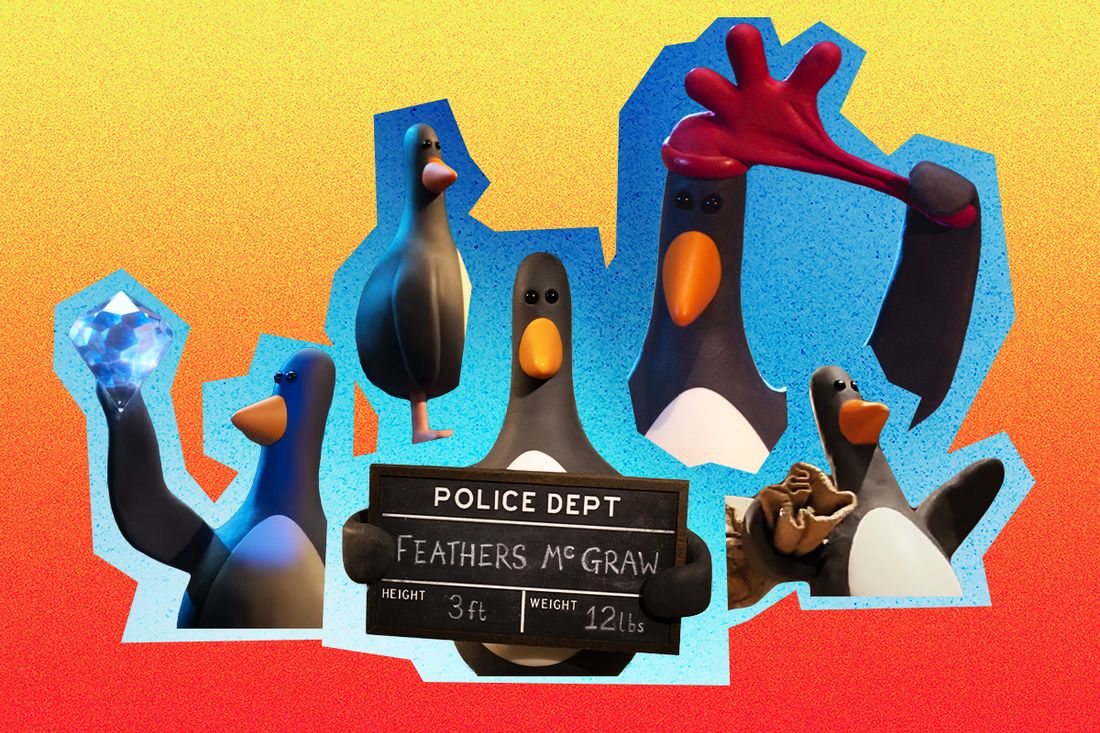
Character Profile: Feathers McGraw, a boarder debuted in 1993’s “The Wrong Trousers,” resides with Wallace and Gromit while devising plans to pilfer the Blue Diamond from a nearby museum at a weekly rent of £20. Standing at three feet tall and weighing 12 pounds, he embodies pure malice. After being apprehended, he serves time in a high-security zoo. In the latest Wallace & Gromit film, “Vengeance Most Fowl,” we find Feathers, having spent years nursing his grudge, determined to exact revenge on the duo who imprisoned him.
The material: Clay. And not a lot of it.
Key Characteristics: Adept at assuming a chicken-like appearance – but don’t be fooled, this is no ordinary individual! This character possesses an impressive mastery of technology, remains unfazed by combat situations involving firearms or physical altercations with opponents. Sweats under pressure and maintains a cool composure. Proficient organist. Stands firm instead of waddling, and keeps company with a seal as a pet. Utterly mute and emotionless, adding to his already intimidating presence.
Born from a doodle
The animator and filmmaker Nick Park, who is known for creating the Wallace & Gromit series, found himself frequently sketching penguins while he was a college student. At that time, he was already working on his first short film in the series, A Grand Day Out. However, instead of featuring the penguins in this particular script, Park had an additional idea to potentially generate some income. He explains, “I was trying to find ways to make money as a student. I was considering book illustration. I thought Wallace & Gromit could work as children’s books. I had the idea of using penguins for that. I found them visually appealing and comical.” Unfortunately, these illustrations were never produced. But Park’s ongoing fascination with penguins, combined with the success of A Grand Day Out, led him to revisit the animal years later when developing the follow-up film, The Wrong Trousers.
The initial concept revolved around numerous penguins visiting Wallace and Gromit’s home, but due to cost considerations in production, it was decided to have only one penguin instead,” he clarifies. “As the clay used wasn’t cheap, I worked with a single penguin. This led to more comedic elements, exploring what kind of mischief a penguin might cause within a household.
‘What if he was the antagonist? How would that work out? It adds an element of intrigue.’ This suggestion piqued my interest, and I drew inspiration from Hollywood’s golden age.
I began to experiment with the concept of a ‘stranger in the spare room,’ similar to Alfred Hitchcock’s narrative style in 1923’s ‘The Lodger.’ I also thought about films like ‘The Ladykillers’ or comedies from that era, adding some Bernard Herrmann-inspired music.
Once the penguin became the villain, the concept took on a new life and became much more engaging. The idea of a penguin acting as a villain was unexpected, which made it all the more appealing.
No waddling allowed
When Feathers transitioned into the villainous character, Park established specific guidelines for his physical appearance. Instead of making him a typical funny penguin as many might have expected at the time, they decided to go against the norm. This was reflected in how Feathers moved smoothly and deliberately without any comedic elements. Steve Box, known for animating “The Wrong Trousers”, received strict instructions from Park: “He’s like a milk bottle. Ignore his legs. He should only move at this slow pace, let his legs slide beneath him, and perform actions as needed. This odd movement made him more terrifying.
The design of the storyboard remained consistent during filming, featuring Feathers who had a featureless face and two thumbtack-like eyes. As Parks explains, “You know those thumbtacks with round heads and the pin snipped off? That’s him.” Finding the perfect pair that matched was crucial since they all varied slightly, hence the lengthy search. Time and budget limitations played a role in shaping Feathers’ physicality. Parks notes, “We found that it was most effective for him to simply walk and perform small, deliberate turns, which reduced the need for a large team to sculpt the clay.” Many fellow filmmakers were astounded by how impactful this tiny penguin turned out to be. Even Steven Spielberg and Danny Boyle reached out to express admiration, but Parks’ family offered harsher criticism: “They developed a fear and dislike for him. There was genuine disdain towards him.
The return of the king
https://youtube.com/watch?v=watch?v=X0ZGf2B01uU
In his own words, Park didn’t intend for “Vengeance Most Fowl” to be a follow-up to “The Wrong Trousers.” Instead, he referred to it as a “companion piece.” He had an idea about Wallace creating a group of intelligent gnomes called “Norbots” to improve his and Gromit’s lives. However, the concept seemed to lack the familiar sinister tone that the franchise was known for. As Park recalls, around five years ago, a brilliant idea struck him involving Feathers, a character he had considered reviving before but found no suitable reason or context.
This time, though, “Vengeance Most Fowl” faced a significant challenge: it needed a villain with a personal motive, which Park and co-director Merlin Crossingham deemed crucial. They decided to use Feathers for this role, as he could manipulate the smart gnome technology for his own evil intentions. “This was precisely what we needed, and Feathers was the ideal candidate,” Park explains. “In this story, Feathers raises a question: who controls the technology that we all depend on and are addicted to?
Drawing inspiration from numerous films shaped the sinister persona I gave to Feathers. For instance, Alfred Hitchcock’s “Rebecca” greatly influenced Parks’ characterization of Feathers. As I put it, “Mrs. Danvers, portrayed by Judith Anderson in ‘Rebecca’, served as a model for Feathers and Gromit’s relationship. Her manipulative gaslighting and eerie, almost ethereal movements mirrored the dynamic between Feathers and Gromit.”
In “Vengeance Most Fowl,” I also drew upon Robert De Niro’s performance in “Cape Fear.” I explained, “We paid tribute to ‘Cape Fear’ at the start by depicting Feathers observing from afar. Every time he appears, it’s clear there’s a storm brewing inside him, much like the internal turmoil De Niro portrayed in that film.”
Additionally, the film “Village of the Damned,” based on John Wyndham’s “The Midwich Cuckoos,” resonated with Feathers’ reprogramming of the smart gnomes. I commented, “The smart gnomes represented Feathers’ alter ego. As a child, they terrified me, and that fear translated into their synchronized movements when Feathers enters a room, reminiscent of the children in ‘Village of the Damned.’
‘He’s violent by intent’
https://youtube.com/watch?v=watch?v=jrmZIgVoQw4
In the beloved Wallace and Gromit series, one pivotal moment that stands out is the train chase from “The Wrong Trousers“, where Feathers appears to flee the house on an endless network of tracks. Suddenly, he pulls out a gun hidden in his flippers and targets our heroic duo. Although the inclusion of a gun might have been unexpected for family-oriented viewers, it was explained that Feathers needed to protect himself from being captured. However, Feathers’ character is not just about violence; as director Park puts it, “His villainy is subtler than straightforward combat. He manipulates.” He further describes Feathers as cunning, using tactics like gaslighting and psychological warfare to get under the characters’ skin. In essence, he forges a relationship with Wallace in order to weaken their alliance and ultimately gain control. (Even a seemingly innocent action such as Feathers putting on Wallace’s slippers in “The Wrong Trousers” serves this purpose.)
According to Park, the character is both shrewd and intelligent, making him an ideal adversary for Gromit since it’s a battle of intelligence versus intelligence. Additionally, Wallace’s lack of awareness allows Feathers to deceive him while wearing a chicken-glove disguise. As Crossingham points out, this dynamic works well because Gromit senses something amiss, while Wallace, due to his naivety, is easily fooled. Feathers, being selfish and careless, manipulates the situation without regard for the other characters.
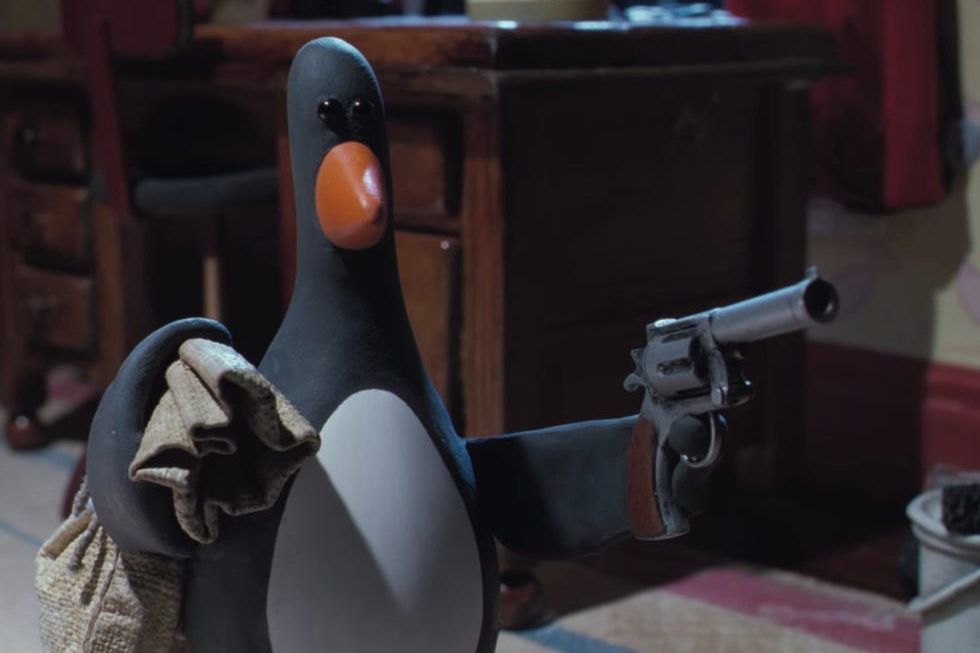
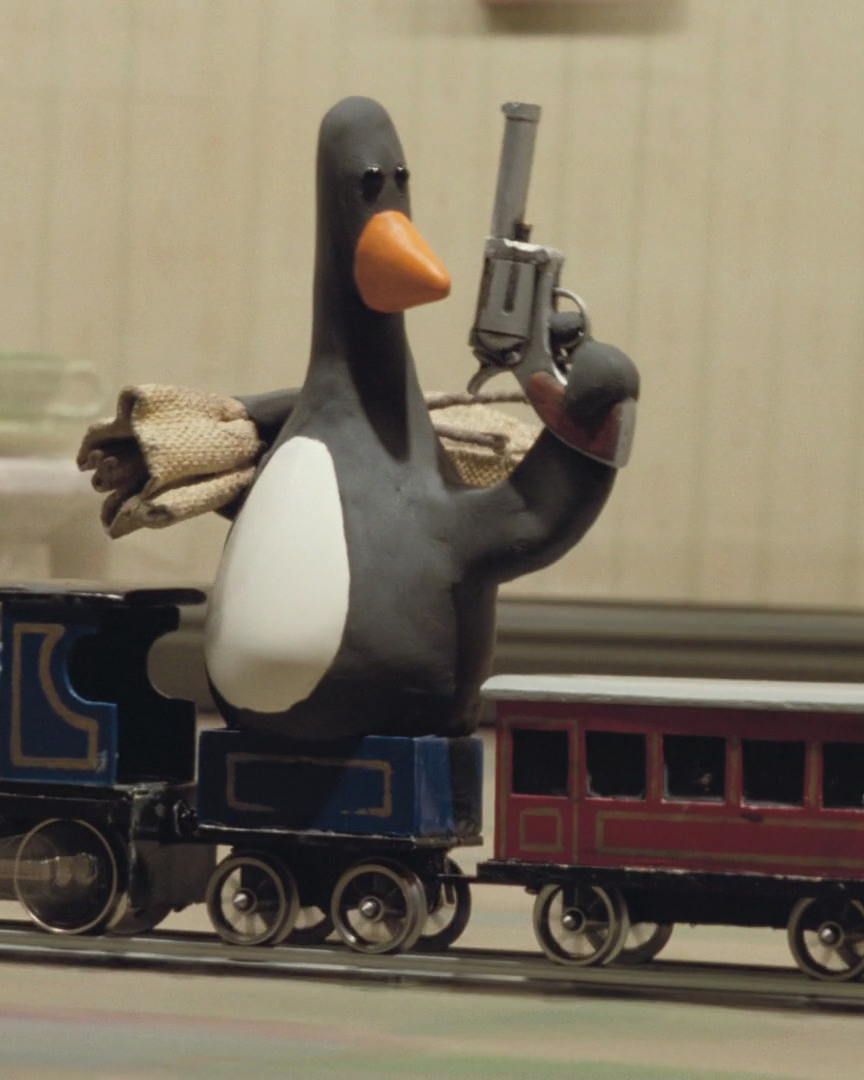
In the climactic scene of “Vengeance Most Fowl”, instead of a train-gun-chase, Feathers and Gromit engage in a high-stakes confrontation atop a boat after a prolonged riverboat pursuit. Exiting a tunnel, they find themselves hundreds of feet above ground level. The creators, Park and Crossingham, deliberated over the most fitting way to portray their climactic fight, aiming to steer clear of straightforward brawls. Crossingham expressed his thoughts, “That’s not a very refined resolution. It diminishes Feathers. It reduces him from a clever, scheming villain who delegates dirty work to others, to a common street fighter.” He also added, “Gromit isn’t typically combative in that manner. We decided to make it a contest of wits instead, showcasing their intellectual battle.”
For one instance, it appears as though Feathers has the upper hand: he maintains a chokehold on Gromit using an umbrella, recalling his earlier lethal use of firearms. However, Gromit manages to wriggle free, creating a powerful visual impact. “It’s a physical altercation that encapsulates their dynamic,” Crossingham explains. “Then it ends precisely because of that reason.” He further notes, “Feathers is indeed a violent character, but his violence is deliberate.
His Achilles flipper …
It’s likely that Feathers, much like any formidable antagonist, has a weakness, though it may be subtle. Crossingham remarks, “He does seem rather vain, doesn’t he?” He’s quite muscular for a penguin, and this vanity can cause problems.” This is first hinted at in “The Wrong Trousers” when he takes time to groom himself before the diamond heist, and later in “Vengeance Most Fowl” we see him doing pull-ups in his cell to maintain his physique. Park, who was tutored by Robert McKee, a renowned writing instructor, emphasizes the importance of incorporating such brief, relatable moments.
In “The Terminator,” he points out the contrast between a flat and multi-dimensional character. For instance, when Arnold Schwarzenegger fixes his eye, puts on his hat and glasses, and adjusts his appearance in the mirror, it showcases human vanity – a trait we also saw in “The Wrong Trousers.” Such brief moments help viewers relate to the character, Feathers. Crossingham explains, “It’s essential to include that relatable aspect, like ‘Ah, yes, I can see myself in that,’ even if it’s just a quick glance at one’s reflection. If Feathers mirrors our actions, the audience can think, ‘Oh, yeah. He’s authentic.’ This makes him all the more terrifying.
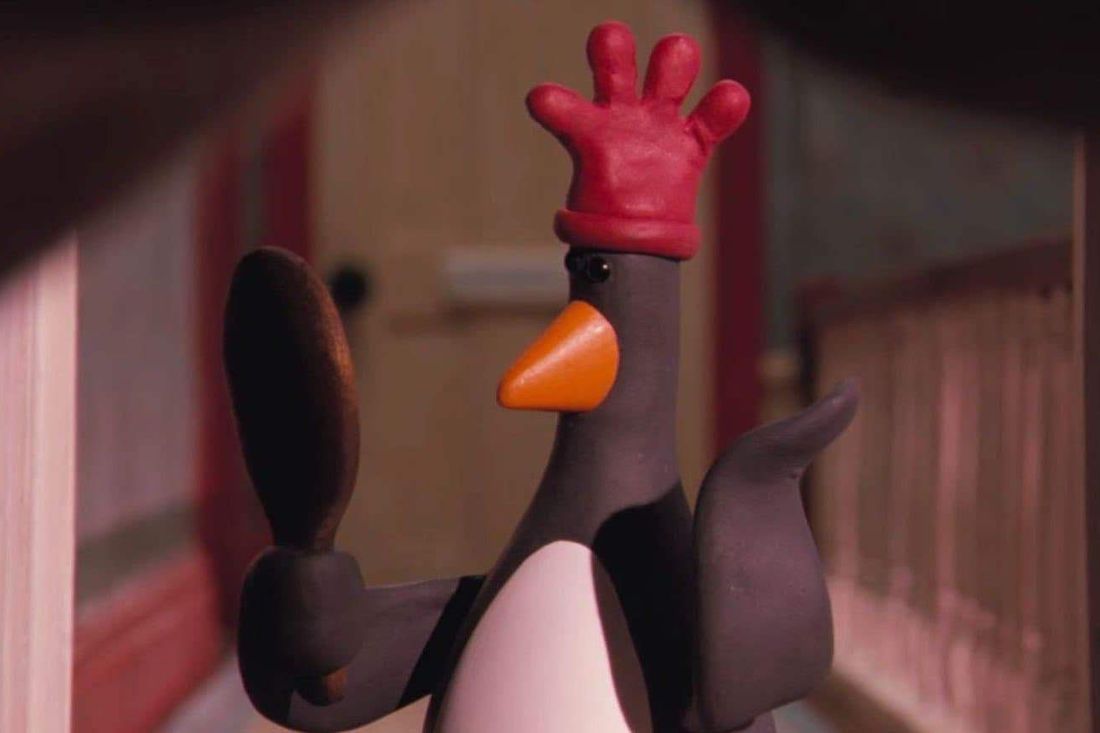
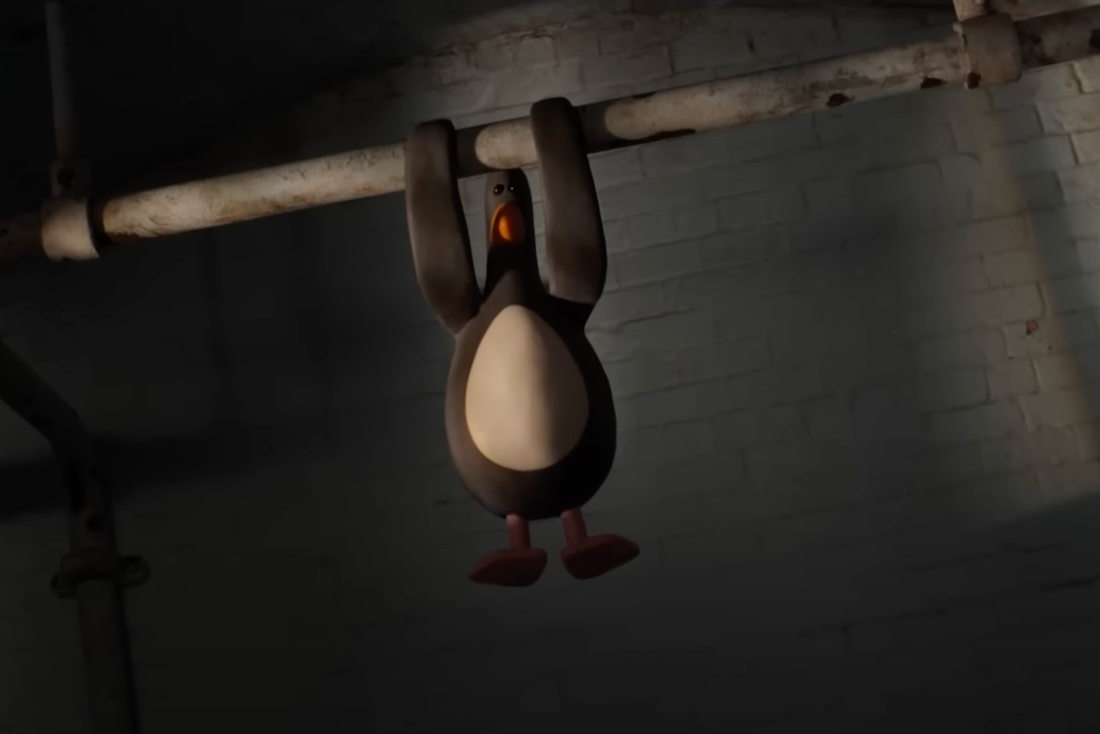
Mark Burton, the author of the screenplay for the movie “Vengeance Most Fowl”, had an in-depth conversation with Park about how audiences should sometimes sympathize with Feathers, a character who is a villain. As he confessed, “I really enjoy films where you begin to empathize with the villain, because then you want them to succeed in some way. I found myself rooting for him to win.” Park added, “At times it’s necessary.” In one particular scene, as Feathers was putting the finishing touches on his grand scheme to recover the Blue Diamond after breaking out of zoo prison, he mirrored James Bond’s arch-nemesis, Blofeld, by displaying a tender side towards an animal while seated on a chair. “He gently strokes a seal and pats it on the head,” Park explained, “showing that he has empathy. However, Feathers decides not to use this compassion. The fact that Adolf Hitler likely loved his dog is chilling.
‘We’re not Vader-ing Feathers’
In a twist of fate, Vengeance Most Fowl concludes with Feathers finding himself feathered, having unsuccessfully pursued the diamond. Cunningly, Gromit switches bags during their struggle, leaving him instead with a turnip. As they board a train into the unknown, Feathers manages to escape, but Wallace, Gromit, and the local police force choose not to pursue him. This indifference is particularly disheartening for a villain like Feathers who craves such attention. The author, Park, expresses that this is a punishment worse than imprisonment for Feathers – being left ignored.
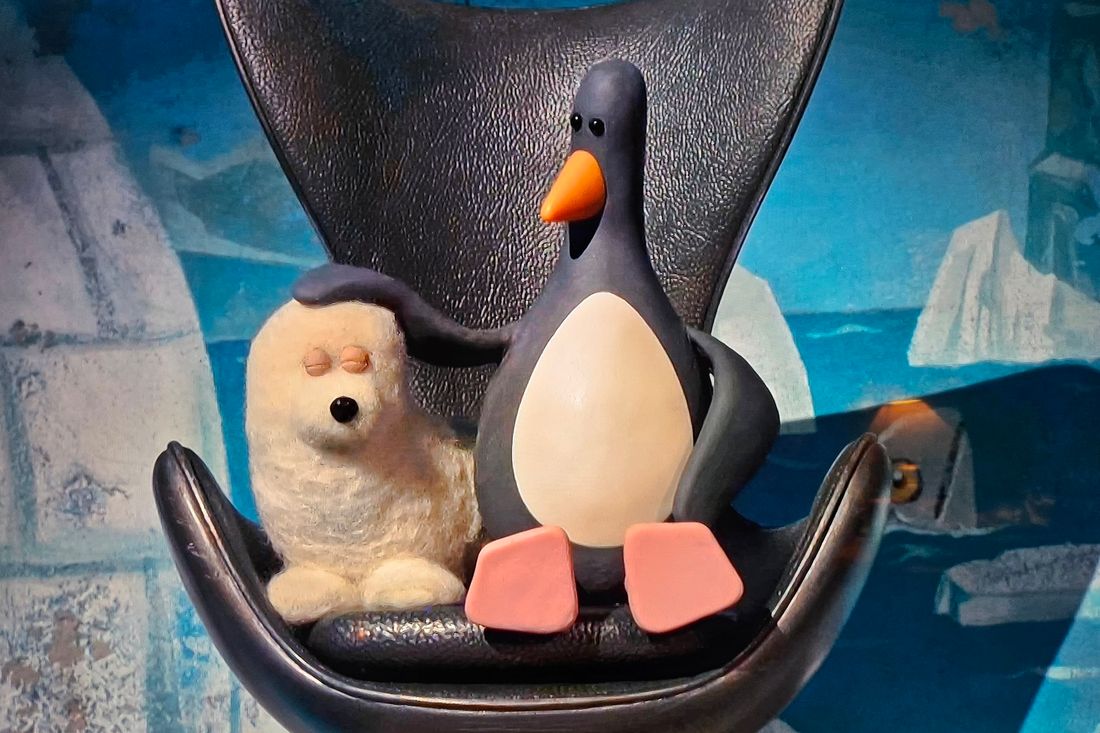
The pair are considering the possibility of creating another Feathers film in the future, provided they find an appropriate concept. However, Crossingham is cautious about making any guarantees. One thing they firmly rule out is a prequel that delves deeper into his background, which they attribute to the influence of films like Star Wars. As a child, Crossingham found it disappointing when Darth Vader’s backstory was revealed, as he had been portrayed as a villain. He feels adding an origin story for Feathers would be creatively unsound and unnecessary, as there will always be a cool penguin character. They are determined to avoid turning Feathers into Darth Vader.
Read More
- Can RX 580 GPU run Spider-Man 2? We have some good news for you
- Space Marine 2 Datavault Update with N 15 error, stutter, launching issues and more. Players are not happy
- FARTCOIN PREDICTION. FARTCOIN cryptocurrency
- Persona Players Unite: Good Luck on Your Journey to the End!
- Streamer Life Simulator 2 (SLS2) console (PS5, PS4, Xbox, Switch) release explained
- DAG PREDICTION. DAG cryptocurrency
- Pacific Drive: Does Leftover Gas Really Affect Your Electric Setup?
- New Mass Effect Jack And Legion Collectibles Are On The Way From Dark Horse
- Record Breaking Bitcoin Surge: Options Frenzy Fuels 6-Month Volatility High
- „I want to give the developer €30 because it damn slaps.” Baldur’s Gate 3 creator hopes Steam adds tipping feature for beloved devs
2025-01-06 21:54